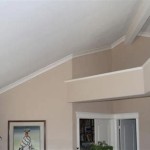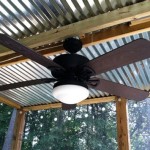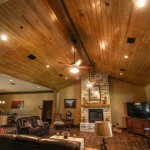For those looking to improve their basement space, drywalling the ceiling is a great option. It can make a huge difference to the look and feel of a basement, while also providing a range of practical benefits. But there is one key question: what is the cost to drywall a basement ceiling?
In this article, we’ll look at the factors that affect the cost of drywalling a basement ceiling and provide a rough estimate of the average cost. We’ll also look at the benefits of drywalling a basement ceiling and the necessary steps to get it done.
Factors Affecting the Cost of Drywalling a Basement Ceiling
The cost of drywalling a basement ceiling depends on a range of factors, including the size and shape of the basement, the type of drywall used, and the complexity of the job. Here are some of the key factors that will affect the cost:
- Size of the Basement: The size of the basement will determine how much drywall will be needed. The larger the basement, the more drywall and labour will be required, and the higher the cost.
- Type of Drywall: Different types of drywall can be used for a basement ceiling. For example, green board drywall is more moisture-resistant than regular drywall, so it may be a better choice for a basement. The type of drywall chosen will affect the cost.
- Complexity of the Job: If the basement is an irregular shape or there are a lot of obstacles such as beams and pipes, the job may be more difficult and require more labour, which will add to the cost.
- Accessibility: If the basement is not easily accessible, it may require extra effort and equipment to get the job done, which will increase the cost.
Average Cost to Drywall a Basement Ceiling
The average cost to drywall a basement ceiling is around $1.50 to $3.00 per square foot. This cost can vary widely depending on the factors mentioned above. For example, if you are using green board drywall, the cost may be closer to $3.00 per square foot. If the basement is an irregular shape or there are a lot of obstacles, the cost may be closer to $4.00 per square foot.
Benefits of Drywalling a Basement Ceiling
Drywalling a basement ceiling offers a range of benefits, both practical and aesthetic. Here are some of the key benefits:
- Improved Insulation: Drywall provides better insulation than bare concrete or wood, which can help keep your basement warm in the winter and cool in the summer.
- Noise Reduction: Drywall can help to reduce noise from outside, as well as any noise from upstairs or downstairs rooms.
- Improved Aesthetics: Drywall can give your basement a much more finished and polished look, making it a more pleasant and inviting space.
- Increased Durability: Drywall is much more durable than other materials, making it a great choice for a basement.
How to Drywall a Basement Ceiling
If you’re planning to drywall your basement ceiling, it’s important to approach the job the right way. Here are the steps you should take:
- Prepare the Basement: Before you begin, make sure the basement is clean and clear of any obstacles. Remove any furniture and other items, and cover any exposed pipes or wires.
- Measure the Area: Carefully measure the area you need to drywall and calculate how much drywall you will need. Make sure to account for any irregularities or obstacles that may affect the measurements.
- Cut and Install the Drywall: Cut the drywall to size and install it on the ceiling. Use screws to secure it in place, and make sure to seal any seams with tape and joint compound.
- Paint the Ceiling: Once the drywall is installed, you can paint the ceiling. Use a primer first to ensure a good finish, and then use a good quality paint to finish it off.
Conclusion
Drywalling a basement ceiling is a great way to improve the look and feel of a basement, while also providing a range of practical benefits. The cost of drywalling a basement ceiling will depend on a range of factors, but the average cost is around $1.50 to $3.00 per square foot. If you’re thinking of drywalling your basement ceiling, it’s important to follow the right steps to ensure a good finish.


:max_bytes(150000):strip_icc()/man-installing-drywall-in-new-house-522951112-5b12da6dba6177003d66594d.jpg)











Related Posts








